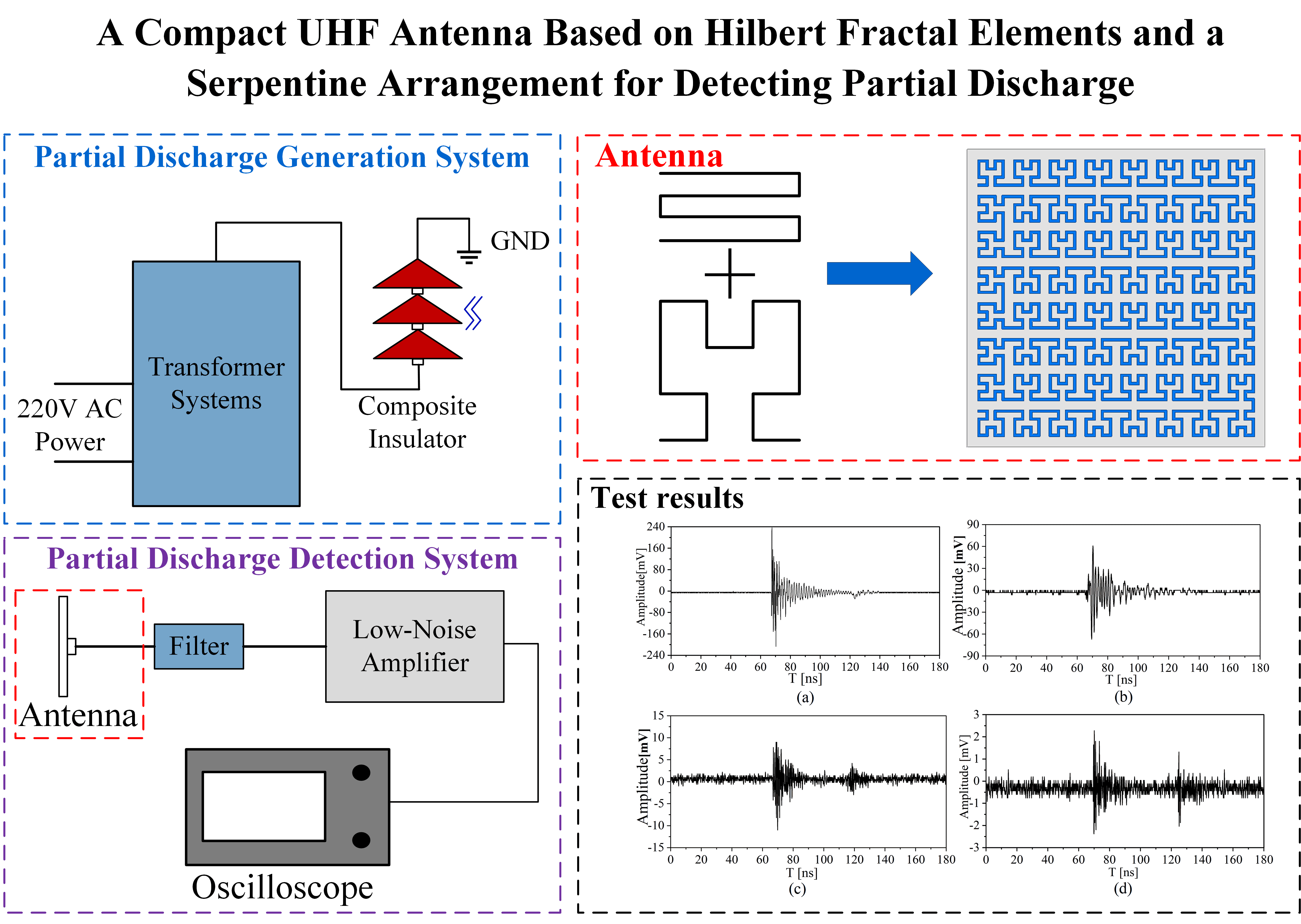 Open Access
Open Access
ARTICLE
A Compact UHF Antenna Based on Hilbert Fractal Elements and a Serpentine Arrangement for Detecting Partial Discharge
1 Guangzhou Power Supply Bureau of Guangdong Power Grid Co., Ltd., China Southern Power Grid, Guangzhou, 510620, China
2 State Key Laboratory of Power Transmission Equipment Technology, School of Electrical Engineering, Chongqing University, Chongqing, 400044, China
* Corresponding Author: Xiang Lin. Email:
Energy Engineering 2024, 121(5), 1127-1141. https://doi.org/10.32604/ee.2024.046861
Received 17 September 2023; Accepted 11 December 2023; Issue published 30 April 2024
Abstract
Efforts to protect electric power systems from faults have commonly relied on the use of ultra-high frequency (UHF) antennas for detecting partial discharge (PD) as a common precursor to faults. However, the effectiveness of existing UHF antennas suffers from a number of challenges such as limited bandwidth, relatively large physical size, and low detection sensitivity. The present study addresses these issues by proposing a compact microstrip patch antenna with fixed dimensions of 100 mm × 100 mm × 1.6 mm. The results of computations yield an optimized antenna design consisting of 2nd-order Hilbert fractal units positioned within a four-layer serpentine arrangement with a fractal unit connection distance of 3.0 mm. Specifically, the optimized antenna design achieves a detection bandwidth for which the voltage standing wave ratio is less than 2 that is approximately 97.3% of the UHF frequency range (0.3–3 GHz). Finally, a prototype antenna is fabricated using standard printed circuit board technology, and the results of experiments demonstrate that the proposed antenna is capable of detecting PD signals at a distance of 8 m from the discharge source.Graphic Abstract

Keywords
Cite This Article
 Copyright © 2024 The Author(s). Published by Tech Science Press.
Copyright © 2024 The Author(s). Published by Tech Science Press.This work is licensed under a Creative Commons Attribution 4.0 International License , which permits unrestricted use, distribution, and reproduction in any medium, provided the original work is properly cited.


 Submit a Paper
Submit a Paper Propose a Special lssue
Propose a Special lssue View Full Text
View Full Text Download PDF
Download PDF Downloads
Downloads
 Citation Tools
Citation Tools